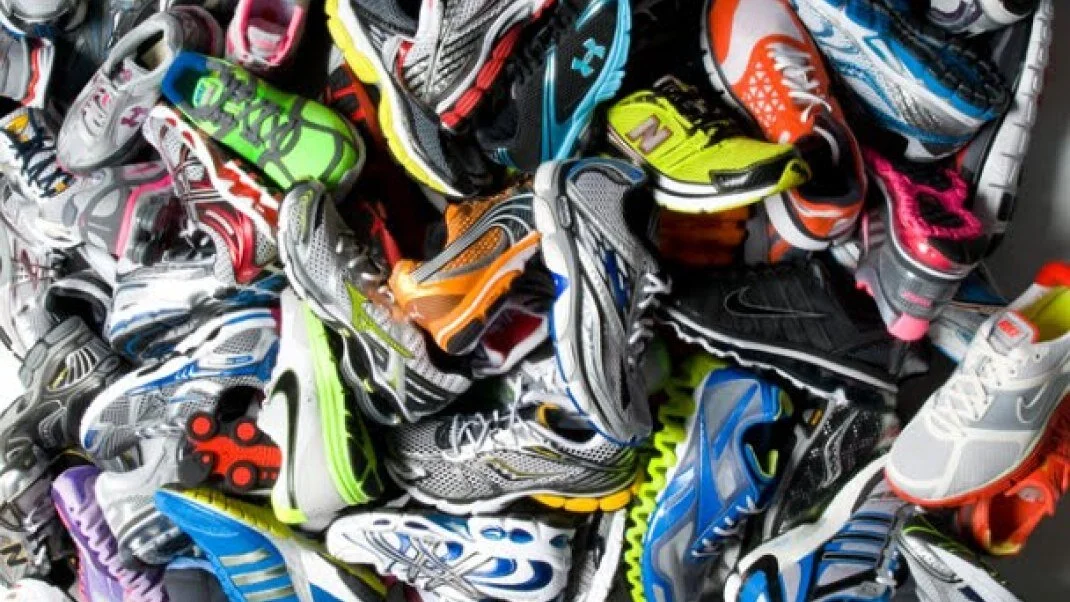How to select your next pair of Running Shoes!
As a physio who deals with runners and sports people on a daily basis here at The Physio & Sports Injury Clinic in Rhos on Sea, everyone always wants to know, “What shoes/trainers should I be running in?”
Lets start then by saying - Shopping for running shoes has become so unnecessarily complicated, FACT!
Theres too much choice on the shelves in all the sports shops (& online), then there’s all the glitzy marketing campaigns trying to persuade you to buy certain ‘brands’ claiming their shoe-technology is superior to everyone else!
This leaves most of us totally confused what to buy!
As a physio, sports people consult with me to get answers for ‘what do I buy’, but the honest answer is… there will never be 1 ‘perfect’ shoe but rather a selection of shoes which ‘may’ work? I know thats a vague answer, but we are all different and have different goals at the end of the day?
“The shoe is only as good as the body which sits within it!”
Remember, a shoe won’t fix poor joint movement and flexibility (in your hips, knee & ankles), neither will it fix poor strength & stamina in certain muscle groups? Therefore I see people requesting help for shoes as a distraction from actually addressing the ‘root cause’ of the problems - their body! Maybe you should start with some Physio to get in good running shape first??
Our *Essential guide* to Select a New pair of Running Trainers.
Get assessed by a Sports Physio or podiatrist first - so you know what sort of shoes you should be looking for, to complement your body, your running style and your goal.
Find a shop where you can spend as long as you need.
If you care about your body and have set yourself a decent running goal for the year (e.g. 10k or a marathon?) then find a decent running shop to help test a range of trainers out. You can’t do this online if you haven’t got a previous shoe type/brand to just reorder. Time and space to test trainers is so important.
Get your Feet Measured! - You will be different sizes in different brand / models of shoe. Not all brands fit the same so if things don’t feel right, keep trying different sizes. Foot width is also not commonly measured anymore, but so important when picking shoes. (Scrunched up toes in narrow shoes can cause bunions over years!)
Don’t pick shoes based on foot/arch-type: (this is an out-dated approach for shops to ‘sell’ shoes and is not based on any real research!) We don’t care as much anymore if your feet ‘pronate’ (roll-in) unless it’s really excessive. All feet pronate as we walk and there’s actually no current correlation between foot pronation and injury! Instead - Pick a shoe based on ‘COMFORT’.
Test how Light they are - Most new trainer brands are moving towards lighter designs, so there is quite some choice. Heavy shoes will make you run slower and tire you quicker (is the theory). However, Light-weight doesn't necessarily mean a minimalist (thin) sole, you can still have a well cushioned/supportive pair that’s still really light in weight.
Inspect the Heel fitting: The shoe should fit snug around the back of your ankle, hugging it well in place without any excessive movement (we don’t any blisters around your achilles tendon!)
Check the mid-shoe to toe end: Basically you shouldn’t be able to twist/bend the shoe in half! (like wringing out a cloth!) It should have some good stiffness in its materials. More bend usually means more foot movement (which we don’t want).
Check for Toe space - You should be able to just about wiggle your toes in the end of the shoe! As a guide there should be no more than thumbs nail space from the end of your toes to the end of the trainer?
Some people recommend going up 1/2 a shoe size for running trainers. Why? Because when you run your feet will swell so you may need a little extra space! The shoe should still be snug when going up a size though (so they shouldn’t feel loose).
Don’t bin your old trainers too soon! - Its is advised that you transition into new shoes slowly and don’t just swap instantly. That transition should only take a few weeks hopefully. Did you know that Elite runners often buy 3-4 pairs of trainers & have them all on the go at the same time. They will rotate usage of them all each week so no shoe is ever too worn down!
Lastly: How often should I replace my trainers?
It’s generally recommended that you change shoes either after 350-600 miles or when your shoes lose their comfort, springiness and tread. However your body will adapt and get used to your old shoes overtime, this is why swapping to new ones can actually cause problems!
So there you have my guide to picking a new pair of trainers. Its not easy and there is no definitive answer here. The key is take your time and don’t be pushed into any special deals, offers of fancy gimmicks! If you have any questions about todays blog or if you are struggling with a running problem then get in touch below.


